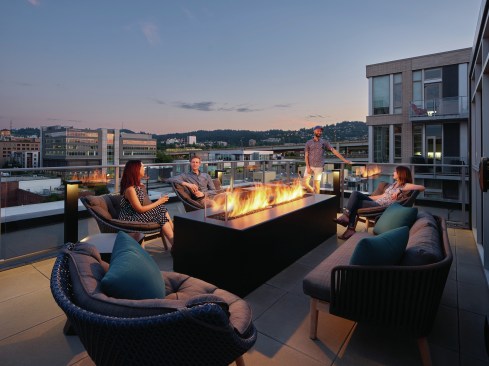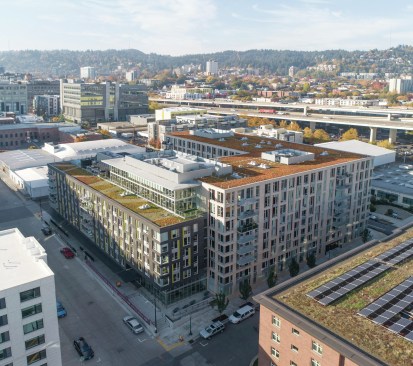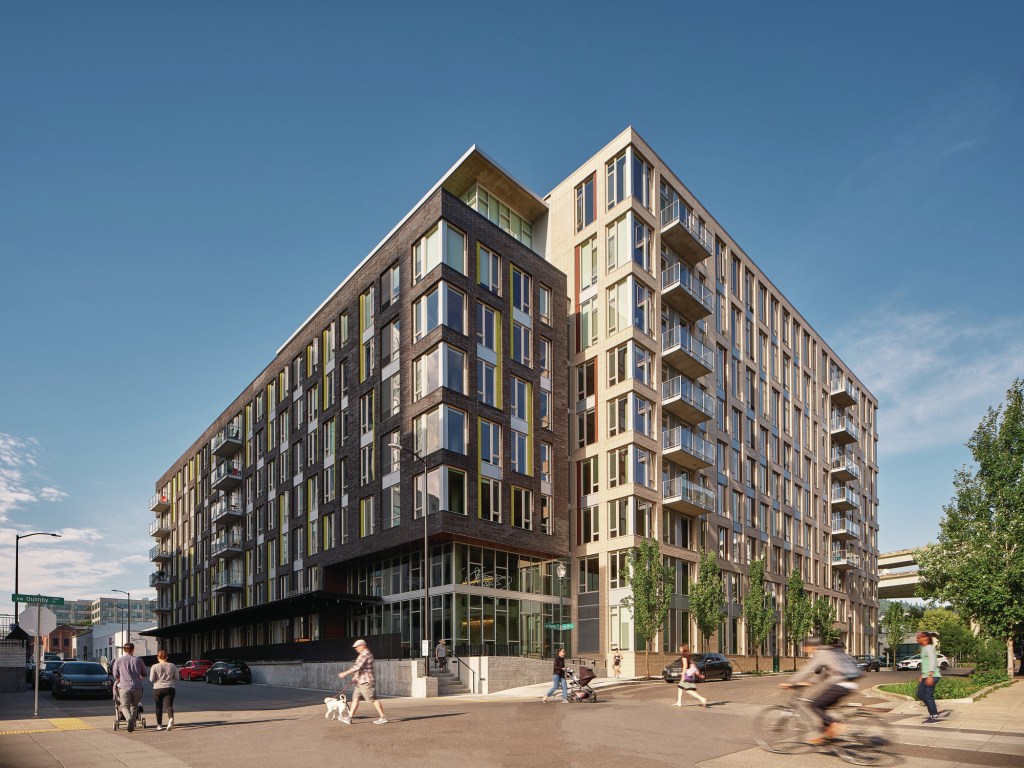Portland, Ore., is not Seattle or San Francisco. Back in the 1970s, before anybody envisioned a housing crisis, the state enacted legislation that required municipalities to establish urban growth boundaries in an attempt to control sprawl and preserve open space. The idea was also to develop high-quality, livable cities and towns by increasing density and encouraging affordable housing close to jobs. Whether the legislation did what it was intended to is open to debate, but steady population growth in Stump Town hasn’t resulted in a crisis.
The nine-story, 290-unit, market-rate Modera Pearl apartment building fits nicely into the mix in Portland’s no longer quite-so-gritty Pearl District. The Mill Creek Residential Trust and the SERA architectural firm project kicked off in 2015, was completed in 2017, and still attracts those curious to see what it takes to score a multifamily slam dunk in Portland.
“A lot of the competition happens through the ‘amenity wars,’” says Kurt Schultz, a principal at SERA. “So when Mill Creek built this project their goal was to be the most highly amenitized new multifamily project in the Pearl.” To make the building stand out, the design team laid out the features in a two-level sky lounge located on the top two floors that offer 270-degree views of the city and access to roof decks, complete with a small pool.
Other building amenities include a demonstration kitchen, a dining and lounge room, a game room, and exercise and yoga studios. A wine storage and tasting room and a media/theater room offer quiet, more intimate areas for residents to gather. Amenity space is expansive, totaling roughly four times as much as comparable multifamily projects.

Courtesy Christian Columbres
The roof deck at the Modera Pearl in Portland, Ore.
Winning the amenity wars in a high-end building in one of the hippest towns in the Northwest is impressive, and the pro-development attitude in Portland is a refreshing breath of moist air from out west. “It’s a lot different from the Bay Area down in California where the cities are very anti-growth and don’t want to see a lot of multifamily built,” says Schultz. “Portland has never been that way. We don’t have caps on growth—the mayor and city council have always been pro-growth as long as it’s done in a good way. Our zoning is always being upgraded to allow more height, more density, as long as you follow certain rules.”
The rules include a thorough design review process for anything built in the central city, no minimum standards for parking, and any above-grade parking counts against the floor area ratio. Modera Pearl includes 219 parking stalls arranged on two underground levels and over 400 bicycle parking spaces.
Schultz also credits the slow and steady growth results in Portland to the fact the area is not dominated by one industry or company. “We’ve always been lucky that we’ve had growth for quite a number of years, but it’s always been relatively manageable and steady so we don’t see the big spikes up and down,” he says.

Courtesy Christian Columbres
The amenity-filled sky deck at the Modera Pearl in Portland, Ore.
Even the NIMBYs have been for the most part corralled. “There’s a little bit of NIMBYism in some of the established neighborhoods but nothing like what you see down in the Bay Area,” says Schultz. “We don’t have it as much up here because most people recognize we don’t have enough housing units, so you might as well build more apartment buildings especially in the central city.”
While the Pearl District is a more gentrified version of its former self, the building does link back to what was there. The U-shaped building occupies an entire city block with the massing featuring a squared-off industrial look clad in two tones of brick. Schultz is especially happy with how the building blends into the evolving neighborhood.
“It really fits well in what used to be the old warehouse district,” he says. “It’s kind of a big warehouse itself even though it’s a contemporary building with really interesting features on the roof. It’s high end, but it picks up that grittiness that gave the Pearl District so much character.”
